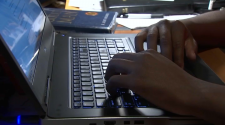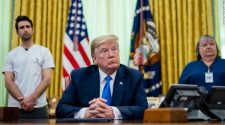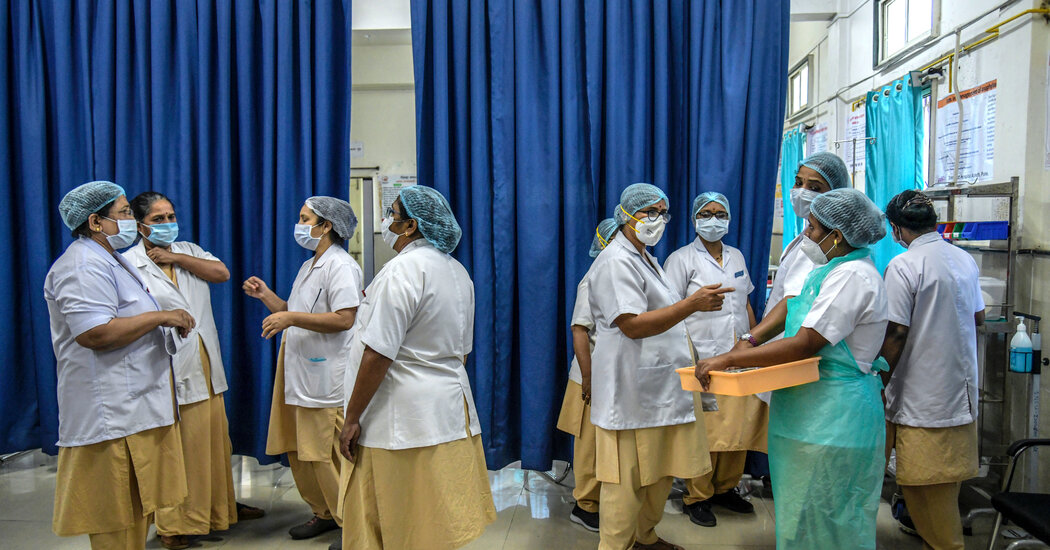Here’s what you need to know:
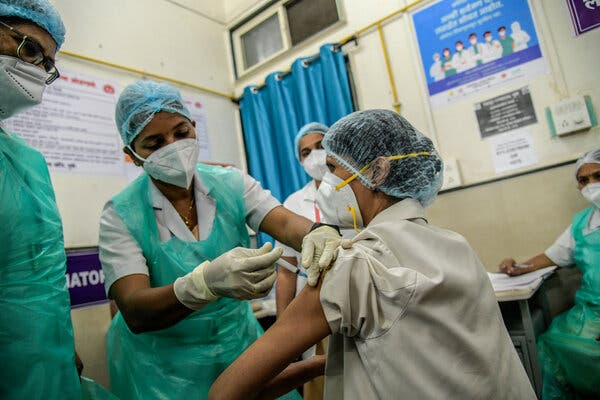
PUNE, India — India on Saturday began one of the most ambitious and complex initiatives in its history: the nationwide rollout of coronavirus vaccines to 1.3 billion people, an undertaking that will stretch from the perilous reaches of the Himalayas to the dense jungles of the country’s southern tip.
The campaign is unfolding in a country that has reported more than 10.5 million coronavirus infections, the second-largest caseload after the United States, and 152,093 deaths, the world’s third-highest tally.
Prime Minister Narendra Modi kicked off the vaccine drive on Saturday with a live television address as 3,000 centers nationwide were set to inoculate a first round of health care workers. About 300,000 people were set to receive the vaccines on Saturday alone, followed by millions more health care and frontline workers by spring.
“Everyone was asking as to when the vaccine will be available,” Mr. Modi said. “It is available now. I congratulate all the countrymen on this occasion.”
At Kamala Nehru Hospital in Pune, a city of about 3.1 million southeast of Mumbai, 100 long-stemmed red roses were stacked neatly on a table beside a bottle of hand sanitizer, one for each person registered to receive the Covishield vaccine, developed by AstraZeneca and Oxford University and manufactured by the Pune-based Serum Institute of India.
Covishield and another vaccine called Covaxin were authorized for emergency use in India this month.
Neither Covaxin’s manufacturer, Bharat Biotech, nor the Indian Council of Medical Research, which contributed to the vaccine’s development, has published data proving that it works. In a Covaxin consent form at District Hospital Aundh, one of a handful of sites in Pune where the vaccine was being administered, the manufacturer noted that clinical efficacy was “yet to be established.”
Dr. Rajashree Patil, one of the health workers who received the Covishield vaccine at Kamala Nehru Hospital, said she was both excited and nervous. After contracting the coronavirus while working in the government hospital’s emergency room in May, she spent 12 days in a Covid ward at another hospital, having lost her senses of smell and taste and experiencing extreme fatigue.
“I’m a little bit worried. Actually we’re on a trial basis,” Dr. Patil said. “But I am happy we are getting it so we can one day be corona-free.”
Another doctor who received the Covishield jab at that hospital, the anesthesiologist Usha Devi Bharmal, said that she had wanted to get a shot to dispel people’s fears about coronavirus vaccines. “There are rumors on social media,” she said, adding that she hoped to help show that vaccines are a “positive thing.”
Mr. Modi has pledged to inoculate 300 million health care and frontline workers, including police officers and, in some cases, teachers, by July. But so far the Indian government has purchased only 11 million doses of Covishield and 5.5 million doses of Covaxin.
Indian television stations showed Dr. Randeep Guleria, the director of the All India Institute of Medical Sciences in New Delhi and a prominent government adviser on Covid-19, receiving a jab on Saturday. It was unclear whether Mr. Modi was vaccinated.
India’s rollout, among the first in a major developing country, comes as millions of people in the United States, Britain, Israel, Canada and the European Union have received at least one dose.
India’s vaccination effort faces a number of obstacles, including a growing sense of complacency about the coronavirus. After reaching a peak of more than 90,000 new cases per day in mid-September, the country’s official infection rates have dropped sharply. Fatalities have fallen about 30 percent in the last 14 days, according to a New York Times database.
City streets are buzzing. Air and train travel have resumed. Social distancing and mask-wearing standards, already lax in many parts of India, have slipped further. That alarms experts, who say the real infection rate is probably much worse than official numbers suggest.
Doubts about the effectiveness of the vaccines are making the mission harder still.
At least one state, Chhattisgarh, has refused to accept shipments of the vaccine that is still in its final trial. And just days ago, one of India’s top virologists was still weighing whether to receive a jab.
“It’s really not a lack of confidence in the vaccine,” said the virologist, Dr. Gagandeep Kang. “It’s a lack of confidence in a process that allowed the vaccine to move forward in such a way. If my taking the vaccine would convince other people to take the vaccine, I’d think that’s not right.”
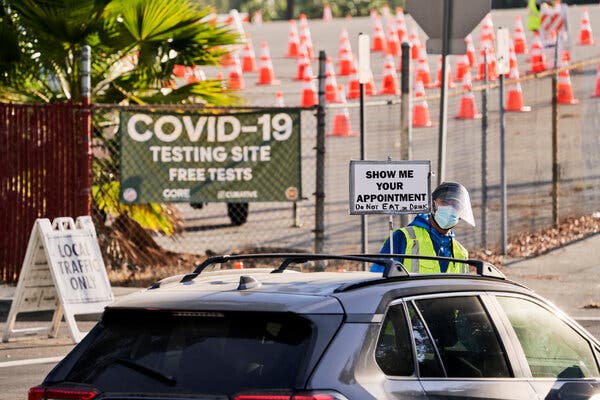
Even as President-elect Joseph R. Biden makes public his ambitious plans to tame Covid-19, a far more contagious variant of the virus is causing researchers to fear that another wrenching surge of cases and deaths is looming.
Federal health officials sounded the alarm on Friday about the fast-spreading variant, which was first identified in Britain. They warned that it could become the dominant source of infection in the United States by March.
“I think we are going to see in six to eight weeks major transmission in this country, like we’re seeing in England,” said Dr. Michael T. Osterholm, director of the Center for Infectious Disease Research and Policy at the University of Minnesota and a member of Mr. Biden’s coronavirus advisory board.
In a study released Friday, the Centers for Disease Control and Prevention called for a doubling down on preventive measures to fight the variant, including more robust distribution of vaccines, which remain far below the benchmarks the government has set.
Tweeting on Friday that his administration “will move Heaven and Earth” to get more people vaccinated as soon as possible, Mr. Biden was still sober about his plans for broadening vaccine distribution even as supplies remain limited. He said he would create mobile vaccine clinics and widely — and equitably — expand access to the shots across the country.
The variant, though it spreads more rapidly, is not known to be more deadly or to cause more severe disease. But further study is needed, the C.D.C. says, to determine whether existing vaccines and treatments will be effective in treating the variant — as well as others that have been discovered in Brazil and South Africa.
As of Friday, the variant first discovered in Britain had been detected in more than 70 cases from 13 states — most recently in Oregon — but the actual numbers are likely to be much higher, said Dr. Jay Butler, deputy director for infectious diseases at the C.D.C.
“I want to stress that we are deeply concerned that this strain is more transmissible and can accelerate outbreaks in the U.S. in the coming weeks,” Dr. Butler said. “We’re sounding the alarm and urging people to realize the pandemic is not over and in no way is it time to throw in the towel.”
“We know what works and we know what to do,” he said.
Current spikes in cases threaten to cripple already overwhelmed hospitals and nursing homes in many parts of the country. Some are at or near capacity. Others have faced troubling rates of infection among their staff, causing shortages and increasing patient loads.
Covid-19 cases and deaths have broken record after record across the country, with a peak number of deaths, 4,400, announced on Tuesday. More than 3,740 new deaths and at least 241,000 new cases were reported on Friday, and the nation is nearing a milestone of 400,000 deaths.
And with the possibility that yet another surge from the new variant will overtake the country’s ability to inoculate enough people to stamp out the virus altogether anytime soon, it will be awhile before people can relax their guard.
“The honest truth is this, things will get worse before they get better,” Mr. Biden said. “And the policy changes we are going to be making, they’re going to take time to show up in the Covid statistics.”
transcript
transcript
Biden Unveils Plan to Combat Coronavirus
President-elect Joseph R. Biden Jr. called the current vaccine rollout a “dismal failure” and vowed to move aggressively to increase availability, improve access and accelerate production of needed supplies.
-
Vaccines offer so much hope. We’re grateful for the scientists and researchers and everyone who participated in the clinical trials. We’re grateful for the integrity of the process, the rigorous review and testing that’s led to millions of people around the world already being vaccinated safely. But the vaccine rollout in the United States has been a dismal failure thus far. And in today’s briefing, we discussed five things, five things we’ll do, in an attempt to turn things around. First, we will immediately work with states to open up vaccinations to more priority groups. The process of establishing priority groups is driven by science, but the problem is the implementation has been too rigid and confusing. The second thing we’re going to change, if we’re getting more people vaccinated, then we need more vaccination sites. That’s where we’re going to harness the full resources of the federal government to establish thousands of community vaccination centers. The third change we’re going to make is we’re going to fully activate the pharmacies across the country to get the vaccination into more arms as quickly as possible. The fourth thing we’re going to do is we’re going to use the full strength of the federal government to ramp up supply of the vaccines. As I said before, we’ll use the Defense Production Act to work with private industry to accelerate the making of materials needed to supply and administer the vaccine. Fifth, we will always be honest and transparent about where we stand, both the good news as well as the bad. We’re going to make sure state and local officials know how much supply they’ll be getting, and when they can expect to get it so they can plan. This will be one of the most challenging operational efforts ever undertaken by our country. But you have my word, and we will manage the hell out of this operation. But as I said last night, we need funding from Congress to make this happen. And I’m optimistic. I’m convinced the American people are ready to spare no effort and no expense to get this done.
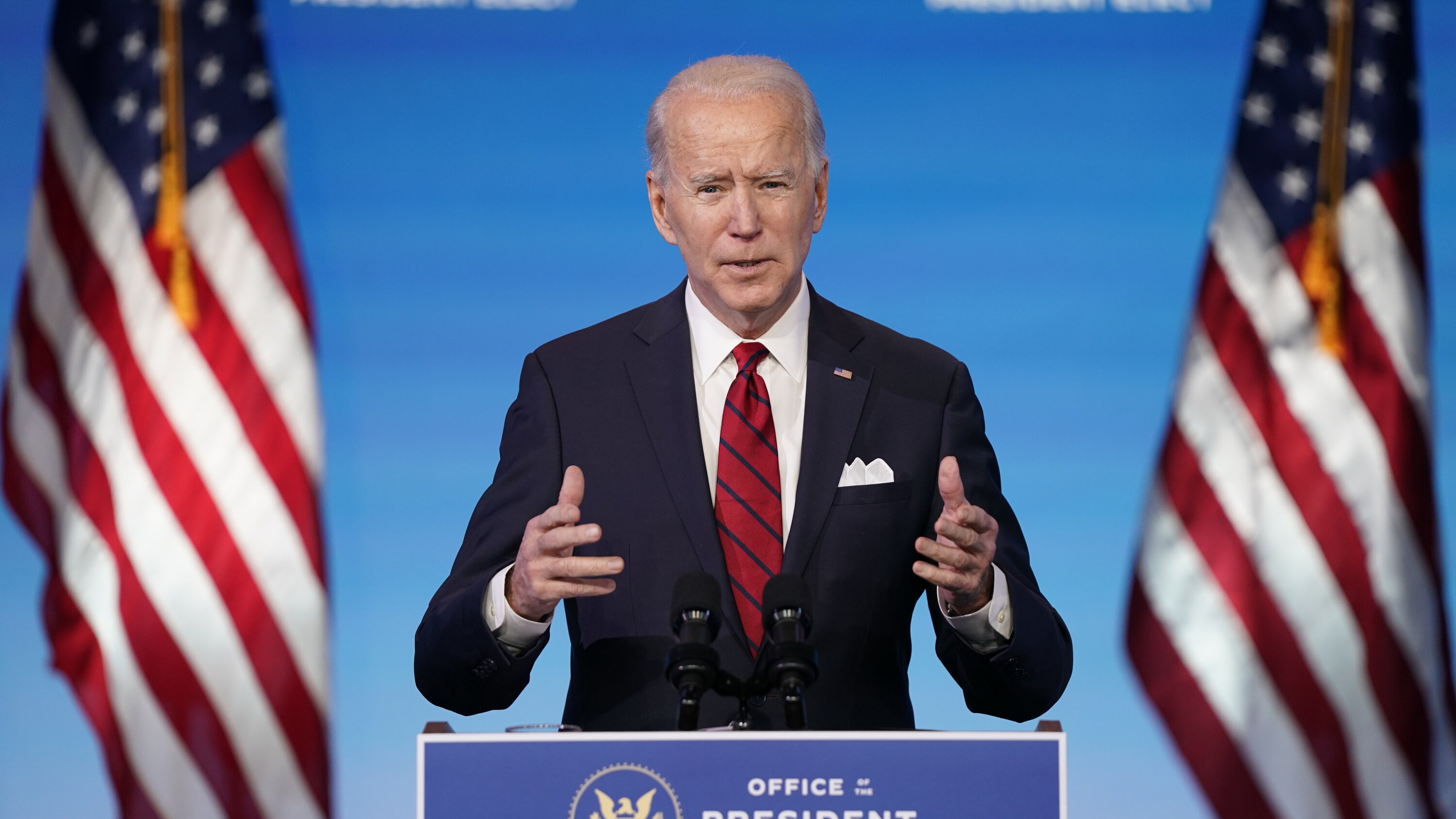
WASHINGTON — President-elect Joseph R. Biden Jr., racing against a surge in coronavirus cases and the emergence of a new variant that could significantly worsen the pandemic, is planning a vaccination offensive that calls for greatly expanding access to vaccines while promising to use a wartime law to expand production.
But his plan is colliding with a sobering reality: With only two federally authorized vaccines, supplies will be scarce for the next several months, frustrating some state and local health officials who had hoped that the release of a federal stockpile of vaccine doses announced this week could alleviate that shortage. Trump administration officials clarified Friday that the existing stockpile would go toward giving second doses and not to new groups of people.
“The honest truth is this, things will get worse before they get better,” Mr. Biden said. “And the policy changes we are going to be making, they’re going to take time to show up in the Covid statistics.”
The president-elect said he would invoke the Defense Production Act, if necessary, to build up vaccine supply. But the team also sought to tamp down expectations. Mr. Biden said his plan “won’t mean that everyone in these groups will get vaccinated immediately, because supply is not where it needs to be.” But, he added, it will mean that as doses become available, “we’ll reach more people who need them.”
The Biden team promised to ramp up vaccination in pharmacies and build mobile vaccination clinics to get vaccine to hard-to-reach and underserved rural and urban communities, emphasizing equity in distribution.
Mr. Biden spoke of “the tragic reality of the disproportionate impact this virus has had on Black, Latino and Native American people,” adding that “equity is central to our Covid response.”
Like the Trump administration, Mr. Biden called for states to expand the vaccine eligibility groups to people 65 or older.
The administration will also make “programs available for high-risk settings, including homeless shelters, jails and institutions that serve individuals with intellectual and developmental disabilities,” the fact sheet said.
In some respects, Mr. Biden’s proposals echo those of the Trump administration, which also called this week for opening vaccine eligibility to groups to 65 and older, making greater use of pharmacies and moving vaccinations to federally qualified health centers. The Trump administration has also frequently used the Defense Production Act to give vaccine makers priority with suppliers for raw ingredients and other materials.
Mr. Biden unveiled the vaccine distribution plan one day after proposing a $1.9 trillion spending package in response to the economic downturn and the pandemic, including $20 billion for a “national vaccine program.” The president-elect has said repeatedly that he intends to get “100 million Covid vaccine shots into the arms of the American people” by his 100th day in office.
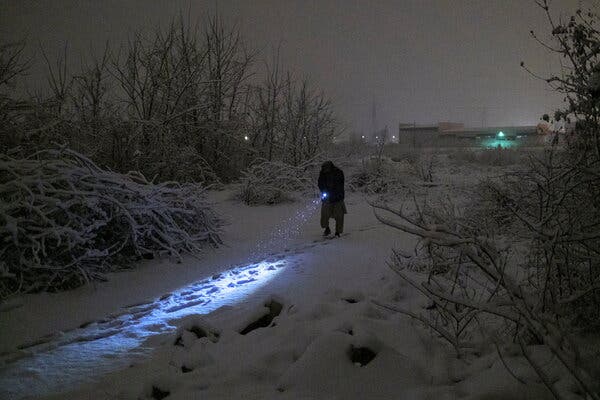
Since the turn of the century the number of international migrants has intensified, driven by desires to avoid armed conflicts and humanitarian disasters, escape political repression and seek economic opportunities elsewhere. But the Covid-19 pandemic blunted that trajectory in 2020, according to data compiled by the United Nations.
In a report released Friday, the Population Division of the U.N.’s Department of Economic and Social Affairs estimated that through the middle of last year, the number of new international migrants was about 5 million, or about 2 million fewer than what had been expected.
“Around the globe, the closing of national borders and severe disruptions to international travel obliged hundreds of thousands of people to cancel or delay plans of moving abroad,” the department said in the report. “Hundreds of thousands of migrants were stranded, unable to return to their countries, while others were forced to return to their home countries earlier than planned, when job opportunities dried up and schools closed.”
Before the Covid-19 disruptions, the report said, the number of international migrants “had grown robustly over the past two decades,” reaching a total of 281 million in 2020, roughly equal to the population of Indonesia.
In another barometer of the collapse in travel caused by the pandemic, the civil aviation agency of the United Nations said in a report Friday that the number of airline passengers fell by 60 percent in 2020 — 1.8 billion passengers compared with 4.5 billion in 2019. The report, by the International Civil Aviation Organization, said the reduction had taken air travel totals back to 2003 levels.
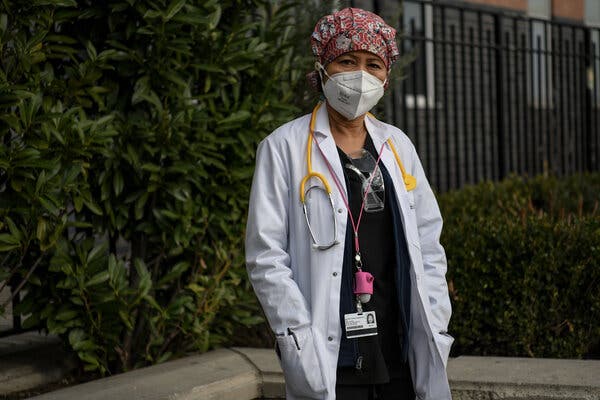
Filipino nurses have a long history of working in New York City hospitals, and a number of studies have revealed how hard the coronavirus affected them in the early months of the U.S. outbreak.
An analysis by ProPublica found that at least 30 Filipino health care workers in the New York City area had died from the virus by June.
And a survey published in September by National Nurses United, the largest nurses’ union in the United States, went on to find that 67 Filipino nurses had died of Covid-19. That figure, which was pulled from public obituaries, is around a third of the total registered nurses who have died nationwide, though Filipinos make up only 4 percent of those nurses over all.
“It’s really heartbreaking,” said Zenei Cortez, the president of National Nurses United and a nurse from the Philippines herself. She also fears that the true toll is worse. “The numbers we are producing are all underreported, I’m sure of that.”
Now, another wave of infections has arrived. The infection rate in New York City has risen in recent weeks, and hospitalizations are increasing; more than 450 New Yorkers have died of Covid since the beginning of 2021.
Many nurses working in hospitals are better prepared this time: They know how and when to use ventilators, for example. They also have priority in receiving the Moderna and Pfizer vaccines, which have been shown to be highly effective.
But it will be weeks before New York City’s hospital workers are fully immunized. In the meantime, nurses in several of the city’s hospitals have warned about a lack of protective gear. And some hospitals are reviving coronavirus units that became a necessity last spring.




